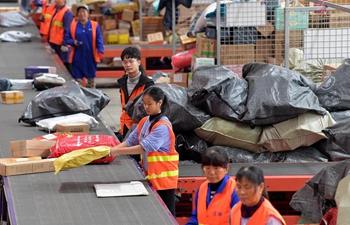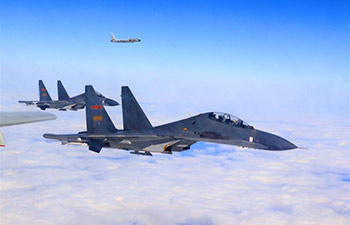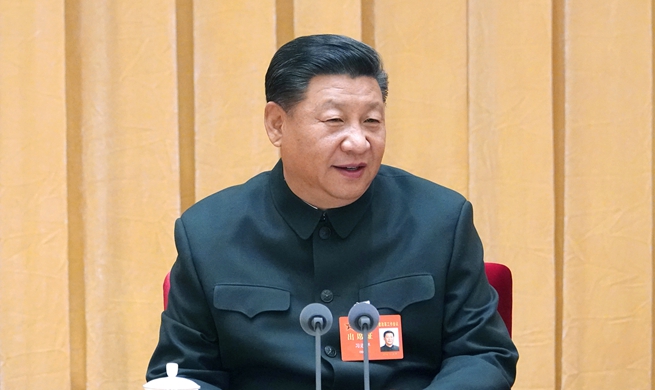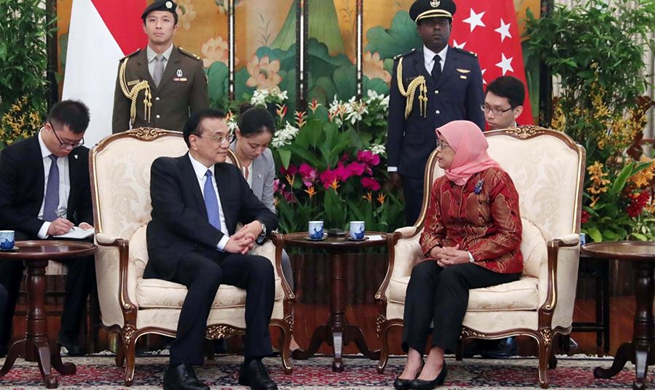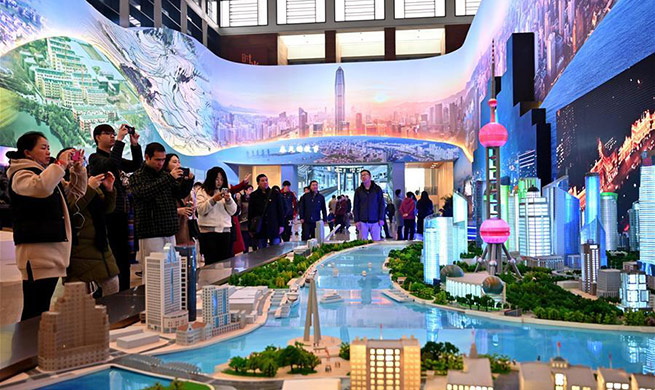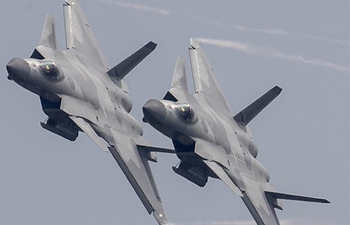SINGAPORE, Nov. 15 (Xinhua) -- China and the Association of Southeast Asian Nations (ASEAN) have adopted the China-ASEAN Partnership Vision 2030, charting a new course for further development of their mutually-beneficial cooperation.
The blueprint, which envisions a medium and long-term cooperation plan underpinned by the three pillars of political and security cooperation, economic cooperation and people-to-people exchange, and supported by mutually agreed areas of cooperation, has been hailed as a milestone in the relations between the two sides.
The vision "will chart the strategic direction of our cooperation," Singaporean Prime Minister Lee Hsien Loong said at the opening of the 21st China-ASEAN summit, which endorsed the vision on Wednesday.
ASEAN Secretary General Lim Jock Hoi told Xinhua that the vision will lay a solid foundation for the strategic partnership between the two sides in the coming decades.
Reaffirming the commitment of both sides to further explore potential for deeper and wider cooperation, it points out the direction to advance the China-ASEAN strategic partnership to reach a new high, Lim said.
China is the first country to map out medium and long-term cooperation plan with ASEAN, which means their strategic partnership has been upgraded to a new phase with better quality of cooperation being stressed, Chinese ambassador to ASEAN Huang Xilian told Xinhua.
Facing the future, the vision draws up a blueprint for further advancing their strategic partnership and forging wider mutually beneficial cooperation so as to build a closer China-ASEAN community with shared future, the ambassador said.
Phay Siphan, spokesman for the Council of Ministers in Cambodia, said the China-ASEAN Strategic Partnership Vision 2030 would be a concrete roadmap for both sides to work together closely to build a community of shared future.
"The vision reflects China-ASEAN's high commitment to build a region of ensuring peace and stability, common development, and shared benefits for all," he told Xinhua. "Closer partnership between China and ASEAN should serve as a role model for countries all over the world."
"The vision features stronger mutual trust and win-win cooperation between the two sides," Siphan added.
He said the people-to-people exchange between China and ASEAN is vital to bringing closer relations between the peoples of the two sides and reducing or avoiding misunderstanding and cultural prejudice.
He said to carry out the vision successfully, it needs unwavering political will from the leaders of ASEAN and China, and officials and peoples of both sides should be aware of the vision clearly and work hand-in-hand to fulfill it.
Joseph Matthews, director of the ASEAN Education Center and senior professor of the Beltei International University in Phnom Penh, said the vision is being considered as a milestone in the relationship of both sides and watersheds in their strategic partnership.
Both sides should strengthen and further their substantive economic relationship, he told Xinhua, adding that they also need intensify efforts to meet the target of 1 trillion U.S. dollars in trade volume and 150 billion U.S. dollars in investments by 2020, including through the implementation of the ASEAN-China Free Trade Area (ACFTA) and the ACFTA upgrading protocol.
Chheang Vannarith, vice chairman of the Cambodian Institute for Strategic Studies, said the vision has been developed to address emerging realities and needs in the region.
"ASEAN and China need to work closely together to enable their people to realize their potentials and to realize a genuine community of shared destiny," he told Xinhua.
Thonglor Duangsavanh, editor-in-chief of local daily Vientiane Times, said closer people-to-people exchanges between China and ASEAN will contribute to the mutual political and security trust as well as pragmatic economic and trade cooperation between the two sides. Enditem






